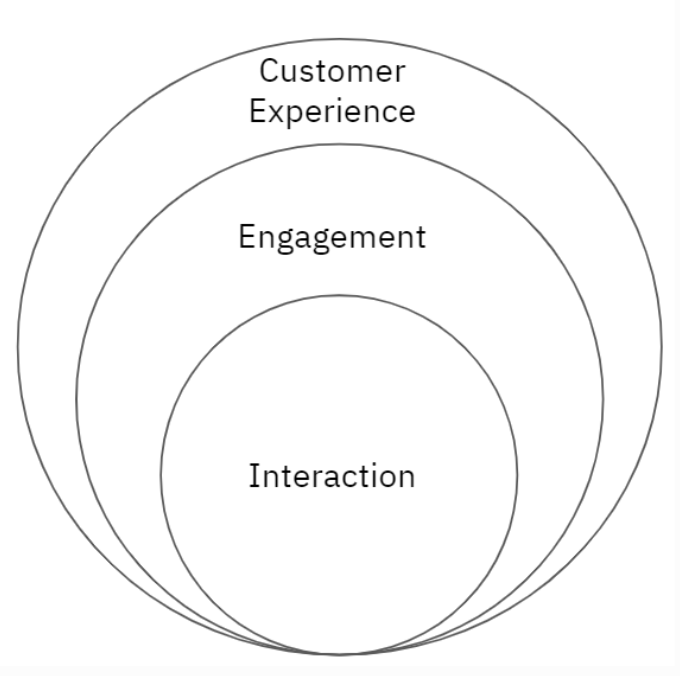Customer behaviour prediction—including customer churn prediction—is at the top of our clients’ agenda—and for good reason. Who doesn’t want to be able to predict the future for their customers, employees, and business?
What Is Predictive Modelling?
In the world of customer experience, predictive modelling means using data to predict the future needs, wants, and behaviours of your customers and employees.
My name is Ton Luijten, and I’m a Customer Success Director for InMoment, as well as the Data Science Lead for the APAC region. I’ve come across many interesting case studies that show how predictive models can be really powerful when trying to sell products or services to your consumers. However, when it comes to actually improving the experiences of your customers, it becomes more complex.
In order to take action and make the right improvements to your CX, it’s vital to understand why something will happen. If you do not have those actionable insights, you will know what or who to target, but you don’t know how best to target them. In this post, I’ll take you through why you need both prediction and interpretation to make the best business decisions.
What’s the Difference Between Prediction and Interpretation?
Let’s take a step back and talk about the difference between prediction and interpretation. In data science, there’s a trade off between prediction accuracy and model interpretability. We have very flexible approaches that tend to come with great prediction accuracy, we’ll call these “black box” models. We also have more restrictive approaches that lend itself to better interpretation, which we’ll call “white box” models. While at first glance it might be appealing to always go for black box models (i.e. the flexible approach with the higher prediction accuracy), you might want to opt for white box models, which leave room for greater interpretation.
To Decide Which Prediction Model, Identify Your Goal
The best model for your business will depend on what you’re trying to achieve. If you’re in a situation where you just want to be able to predict who will buy your products or services, then you don’t really have a need for interpretation, because you just need to target that audience with your ads. However, if you need to have a conversation with a customer that’s very likely to churn, it might be useful to understand why they’re going to leave, so you can have a more relevant conversation.
Bringing Employee and Customer Churn Prediction to Life
The most common use case for predictive models in CX and EX tends to be employee or customer churn, which means customers or employees are intending to leave your brand. Of course businesses are motivated to retain their customers and employees, as it takes time and money to replace both customers and talent.
When we build predictive models for churn, I typically create at least two—one black box model, where I use a flexible approach that tends to achieve good prediction accuracy and a white box model that provides more insights. When we do this, it becomes very easy for clients to understand why it’s important to have interpretation alongside your prediction accuracy.
Recently we went through this exercise with one of our clients and the black box model provided a great fit, however the only output it provided was relative importance of the variables. In this case it showed tenure as the most important driver. Now this might not be a surprise for most of you, as tenure tends to be quite important when it comes to churn. It’s also not very useful and just throws up more questions; the key question would be at what tenure do my clients start to churn?
Taking Action Post-Churn Prediction
The most important part of predicting churn is taking action on those insights. Churn prediction won’t give you all the answers to why customers or employees might be leaving, but it will direct you where to focus. You’ll need to identify the best way to avoid the churn—and there are right ways and wrong ways of actioning your churn insights.
The wrong way of taking action might look like contacting your at-risk customers and explaining why they shouldn’t leave, or perhaps explain how easy it is to use our product or service. It’s also a bad idea to call at-risk customers to confirm they are leaving, then try and talk them out of it.
These approaches are highly problematic and could cause customers or employees who weren’t actually going to leave to consider doing so. After all, some customers or employees are not looking to leave but are also not very engaged or loyal, so these types of actions could make them rethink the relationship.
The right way to take action on churn insights is to think broader and make a proactive plan. From the “white box” approach, we could actually see that there were high churn groups across the tenure range. At one end there was a group with very low tenure (less than 1 year) who never really used the service and on the other end we have clients who had been with the company for many years and had done many transactions, but they never bothered to use certain services, which made the service harder to use.
Now this obviously gives us a much better idea of how to take action and reduce churn. For new customers, you might consider introducing incentive programs to start using the service when they sign up, while for customers with a longer tenure, you could intervene and make them aware of the services they could take advantage of to make their lives easier.
So, Do You Need Prediction, Interpretation, or Both?
When it comes to Experience Improvement, we need both prediction and interpretation. We want to be as accurate as possible when we predict churning customers or employees but we also want to understand why they’re leaving—and this is not just a one size fits all.
Different segments might be leaving for different reasons and have different propensities to leave. Having insights into why customers or employees might be leaving gives you a better idea of what to do about it. Of course, this might lead to a slightly less accurate predictive model, but the trade off is worth it, because what good is an accurate prediction if you cannot take effective action on the back of it?
Want to learn more about how you can reduce employee and customer churn with your experience program efforts? Check out this eBook, “How to Improve Customer Retention & Generate Revenue with Your CX Program”












